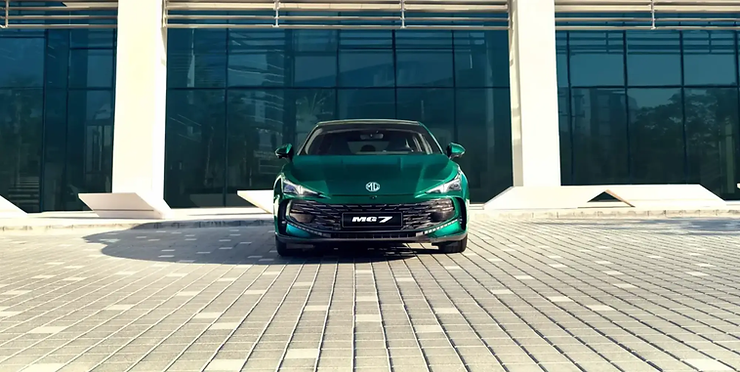**Titular:** *Porsche Struggles at Daytona 24H*
**Intro:**
Porsche Penske Motorsport faced setbacks at the 24 Hours of Daytona as both Porsche 963 GTP hybrids suffered critical technical failures, dropping them from contention. The new Porsche 911 GT3 R also faltered in the GTD class due to Balance of Performance restrictions, though the team salvaged championship points through relentless recovery efforts.
**Factbox (50w):**
– **Issues:** No.7 Porsche 963 required high-voltage battery replacement; No.6 suffered gearbox failure.
– **Result:** No.7 finished 7th in GTP; No.6 retired. GTD-class 911 GT3 R hampered by BoP.
– **Next race:** 12 Hours of Sebring (March), part of IMSA WeatherTech Championship.
**Porsche en las 24 Horas de Daytona 2024: Resistencia ante la adversidad**
La 61ª edición de las 24 Horas de Daytona, prueba inaugural del IMSA WeatherTech SportsCar Championship, dejó un sabor agridulce para Porsche Penske Motorsport. A pesar del debut prometedor del Porsche 963 en la clase GTP y la presentación del nuevo Porsche 911 GT3 R en GTD, los desafíos técnicos y regulatorios marcaron la carrera del equipo alemán.
—
### **El debut del Porsche 963: Promesa truncada por fallos técnicos**
Los dos prototipos híbridos Porsche 963 demostraron un ritmo competitivo desde el inicio. El #6, pilotado por Nick Tandy, Mathieu Jaminet y Dane Cameron, escaló desde la novena posición en la parrilla hasta liderar en múltiples ocasiones durante la noche. Sin embargo, la suerte cambió:
– **Incidente clave**: Un trompo de Tandy en la madrugada costó 3 vueltas, seguido de un fallo en la caja de cambios que forzó su retirada en las últimas horas.
– **Problemas en el #7**: El coche de Matt Campbell, Felipe Nasr y Michael Christensen sufrió un reemplazo de la batería de alto voltaje a las 7 p.m. del sábado, seguido de daños en el sistema de refrigeración. Aunque lograron terminar séptimos en GTP, quedaron fuera de la lucha por la victoria.
Thomas Laudenbach, Vicepresidente de Porsche Motorsport, no ocultó su frustración: *”El coche #7 estuvo fuera tras cinco horas por un fallo crítico en el sistema de alto voltaje. Con el #6, aprendimos mucho, pero debemos mejorar para Sebring”*.
—
### **GTD: El Porsche 911 GT3 R lastrado por el Balance of Performance (BoP)**
El nuevo Porsche 911 GT3 R enfrentó obstáculos adicionales en la clase GTD. La clasificación BoP, diseñada para equilibrar el rendimiento entre diferentes marcas, perjudicó su competitividad:
– **Desventaja técnica**: El ajuste de peso, potencia y aerodinámica impuesto por el BoP limitó su capacidad para luchar por posiciones altas.
– **Resultados discretos**: Ninguno de los equipos clientes con el 911 GT3 R logró destacar, evidenciando la necesidad de revisar la estrategia ante futuras carreras.
—
### **Lecciones para el futuro**
A pesar de los contratiempos, Porsche extrajo aspectos positivos:
1. **Ritmo competitivo**: El Porsche 963 confirmó su potencial en stints largos, especialmente en manos de Tandy y Jaminet.
2. **Resistencia operativa**: Los equipos demostraron agilidad en reparaciones complejas, como el cambio de batería en plena carrera.
3. **Enfoque en Sebring**: Laudenbach destacó que los datos recopilados serán vitales para el próximo desafío en las 12 Horas de Sebring (16 de marzo).
—
**Key Takeaways**
– **GTP**: Fallos técnicos impidieron capitalizar el ritmo del Porsche 963, pero la séptima plaza del #7 suma puntos clave para el campeonato.
– **GTD**: El BoP exige ajustes urgentes para el 911 GT3 R.
– **Próximo objetivo**: Porsche prioriza fiabilidad y optimización del sistema híbrido para Sebring.
**¿Qué sigue?**
El equipo ya trabaja en solucionar los problemas de fiabilidad y dialogar con los organizadores del IMSA para revisar el BoP del 911 GT3 R. Mientras tanto, los aficionados esperan que el legado de resistencia de Porsche en carreras de resistencia brille nuevamente en Florida.
**FAQs: Porsche Penske Motorsport at the 2024 24 Hours of Daytona**
1. **What technical issues hindered the Porsche 963s during the 24 Hours of Daytona?**
Both Porsche 963s faced critical setbacks: the No. 7 car required a high-voltage battery replacement and cooling system repairs, while the No. 6 car suffered a gearbox failure after a spin cost three laps, leading to retirement.
2. **Why did the new Porsche 911 GT3 R struggle in the GTD class?**
The Porsche 911 GT3 R was disadvantaged by an unfavorable Balance of Performance (BoP) classification, which adjusted its weight and power output, limiting its competitiveness against rivals in the category.
3. **How did the Balance of Performance impact Porsche’s race strategy?**
The BoP restrictions forced the Porsche 911 GT3 R to run with reduced performance parameters, making it difficult to challenge lighter, more powerful competitors in the GTD class.
4. **What caused the No. 7 Porsche 963’s high-voltage battery failure?**
A critical malfunction in the hybrid system’s high-voltage battery forced the No. 7 car into an unscheduled replacement, costing significant time and dropping it out of contention for the lead.
5. **How did the No. 6 Porsche 963 climb from P9 to lead the race?**
Nick Tandy, Mathieu Jaminet, and Dane Cameron leveraged strong pace and strategic driving during night stints to advance through the field, briefly taking the lead before mechanical issues arose.
6. **Why did the No. 6 Porsche 963 retire despite strong early performance?**
A gearbox failure in the final hours, compounded by earlier delays from Tandy’s spin and mechanical stress during recovery drives, forced the car to withdraw from the race.
7. **How did Porsche secure championship points despite setbacks?**
The No. 7 car’s seventh-place GTP finish earned crucial points, showcasing the team’s resilience in recovering from battery and cooling issues to complete the grueling 24-hour race.
8. **What repairs were required for the No. 7 car’s cooling system?**
Damage to the cooling system necessitated garage repairs to prevent overheating, but the lengthy process relegated the car to a lower position, though it still managed to finish.
9. **How did Nick Tandy’s spin affect the No. 6 car’s race outcome?**
Tandy’s spin resulted in a three-lap deficit, forcing aggressive driving to regain positions, which increased strain on the gearbox and contributed to its eventual failure.
10. **What lessons did Porsche learn from the Daytona race?**
The team identified vulnerabilities in the hybrid system and powertrain reliability, emphasizing the need for improved durability testing and BoP strategy adjustments ahead of Sebring.
11. **How did Thomas Laudenbach evaluate Porsche’s Daytona performance?**
Porsche’s VP acknowledged disappointment but highlighted insights into the 963’s weaknesses, stressing the urgency of resolving hybrid system reliability and optimizing setups for endurance events.
12. **What was notable about the Porsche 963’s IMSA Championship debut?**
The car demonstrated competitive speed and led laps, but reliability flaws overshadowed its potential, underscoring the challenges of integrating hybrid technology into endurance racing.
13. **How is Porsche preparing for the Sebring 12 Hours in March?**
The team is analyzing Daytona data to address hybrid and gearbox issues, with plans for rigorous testing and setup optimizations to improve reliability and BoP competitiveness.
14. **What caused the gearbox failure in the No. 6 Porsche 963?**
Prolonged mechanical stress from recovery drives after Tandy’s spin and sustained high-speed efforts to catch leaders likely accelerated wear, culminating in terminal gearbox damage.
15. **How did the No. 7 Porsche 963 salvage a seventh-place finish?**
Despite battery and cooling issues, drivers Matt Campbell, Felipe Nasr, and Michael Christensen consistently regained positions during stints and capitalized on rivals’ attrition to secure championship points.
**CTA (Call to Action):**
¿Eres fanático de la resistencia automovilística y quieres seguir cada detalle de la evolución del Porsche 963 y el 911 GT3 R? **¡Suscríbete a nuestro boletín** para recibir actualizaciones exclusivas, análisis técnicos y avances de cara a las 12 Horas de Sebring! **#KeepPushing** con Porsche Penske Motorsport mientras perseguimos la gloria en la próxima ronda del campeonato.
**Conclusión:**
La edición 61 de las 24 Horas de Daytona dejó en evidencia los desafíos técnicos y estratégicos que Porsche debe superar para competir al máximo nivel en la categoría GTP. Aunque la fiabilidad frenó el potencial del 963, el rendimiento en pista demostró destellos de competitividad. Con lecciones valiosas bajo el brazo y un enfoque renovado, el equipo apunta a resurgir en Sebring. Mientras tanto, el 911 GT3 R enfrenta un camino de ajustes en la GTD, donde la búsqueda de equilibrio bajo las regulaciones BoP será clave. La resistencia, como siempre, define esta disciplina.
**Agradecimiento:**
Gracias a los aficionados de Porsche por su apoyo incondicional en cada curva de este exigente desafío. Un reconocimiento especial a los pilotos, ingenieros y mecánicos del equipo Porsche Penske Motorsport, cuya dedicación y trabajo incansable mantuvieron ambos coches en lucha pese a las adversidades. ¡La pasión por la competencia sigue viva! **#PorscheMotorsport** #Daytona24
*¿Qué opinas del desempeño de Porsche en Daytona? ¡Comparte tus reflexiones en los comentarios!* 🏁






